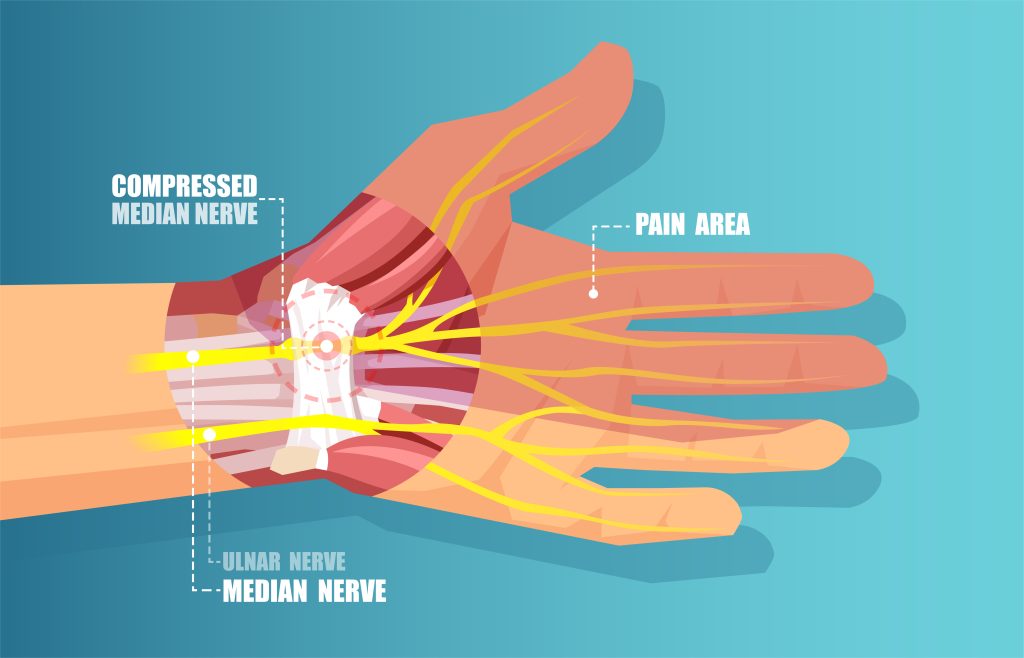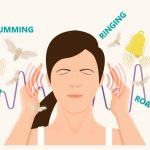Here Are The Dos And Don’ts You Need To Know About Carpal Tunnel Syndrome
Carpal tunnel syndrome (CTS) is a common repetitive stress injury (RSI) caused by the repeated impingement of the median nerve. Along with other nerve bundles, the median nerve runs along the arm and and connects to the hand and fingers through the carpal tunnel, a narrow path in the wrist surrounded by bones and tendons. Repeated pressure on the median nerve causes the numbness and weakness in the hands associated with CTS.
What Is Carpal Tunnel Syndrome
CTS is an extremely common issue due to a combination of better diagnosis methods and the prevalence of modern lifestyles that require repetitive hand and wrist movements. It is likely the most common entrapment neuropathy in Singapore and has many negative consequences for productivity and life quality.
While the exact mechanisms that cause carpal tunnel syndrome are not definitively known, medical researchers are in wide agreement that certain activities and behaviors can contribute to it.
One of the most concerning things about carpal tunnel syndrome is that, in most cases, patients will feel some permanent lingering effects from the condition even after extensive nonsurgical therapy. Fortunately, carpal tunnel surgery has a good record of permanently reducing or eliminating symptoms associated with CTS.
Of course, the best outcome is to not need carpal tunnel surgery at all. If you’re concerned about developing or worsening carpal tunnel syndrome, here are the habits you can change.
Habits To Change To Prevent Carpal Tunnel Syndrome

Don’t Slouch at Your Desk
While slouching will not directly cause pressure on your median nerves, it could increase the odds that your wrists will bend at awkward angles.
Slouching and rolling your shoulders forward can ultimately result in your wrists being bent at awkward angles. Thus, making a habit of maintaining good posture will not just make your back feel better, but it could also help keep your wrists and hands from developing an RSI.
Don’t Overstrain Your Wrists
The wide consensus is that keeping your wrists straight and in a neutral position will not only reduce the risk of developing carpal tunnel syndrome, but also reduce symptoms in existing cases of CTS. Changing workplace peripherals to allow for straighter wrist positions and wearing rigid wrist braces when sleeping can help keep the wrists straight and prevent the impingement of the median nerves.
Do Stretch Frequently
An online study published in the Journal of Physical Therapy Science in 2015 supports the effectiveness of stretches in preventing CTS and reducing symptoms in fully-developed cases of carpal tunnel syndrome.
The purpose of these exercises is to create additional room in the carpal tunnel or allow the nerves to glide properly, thus preventing the impingement of the nerve bundles contained in the wrist. When done frequently, some patients have reported a reduction in their CTS symptoms.
Before attempting regular stretching exercises, make sure to consult a doctor or other qualified health professional, as some cases of CTS may be exacerbated by improper stretching techniques.
Don’t Use The Same Hand For Repetitive Tasks
People tend to prefer one of their hands for certain tasks. For example, most people who regularly use computers heavily prefer using their right hand for manipulating a mouse.
This asymmetric hand use has been associated with the development of CTS on the favoured hand. When possible, switch the hands you use for repetitive tasks. To go with the computer mouse example, you could use your other hand occasionally to relieve some of the strain on the wrist of their preferred hand.
Do Improve Your Diet And Nutrition
People with obesity and type II diabetes have a higher risk of developing carpal tunnel syndrome than the general population. This is probably due to the likely increase in fat deposits around their wrists, which can exert pressure on the carpal tunnel or exacerbate the effects of improper wrist alignment as a result.
While there is some evidence that nutrition can play a role in mitigating or exacerbating CTS, it’s probably less about the type of food that you eat than the number of calories you consume. By eating right, you can reduce the odds of developing obesity or type II diabetes and consequently minimize the risk of developing CTS.
Do Invest In Ergonomic Equipment
When possible, workstations and equipment should be selected or configured to prevent bent wrists and improve overall posture. While ergonomic equipment may be more expensive, they can pay for themselves in the long run due to the reduced symptoms and improvements in productivity.
Do Limit Your Exposure To Vibrating Tools
Vibrating tools have long been associated with higher incidences of CTS. While the mechanism behind this relationship is not fully understood, it’s clear that reducing one’s use of vibrating power tools and other equipment can reduce the incidences of CTS. When possible, alternative tools that reduce vibration exposure should be used instead.
Stress Relief Is The Best Way To Prevent Carpal Tunnel Syndrome
Reducing the stress on your median nerves is the best way to prevent carpal tunnel syndrome. However, the ultimate causes of CTS remain unknown, and it is still possible to develop the condition even with a healthy lifestyle.
Thankfully, carpal tunnel surgery is proven to be effective at reducing CTS symptoms and restoring functionality in the hands, especially when compared to noninvasive methods. If you’re considering surgery or other interventions to manage carpal tunnel syndrome, please consult a qualified medical professional.
More Health Articles To Read
Back Pain Relief: What’s Better Heat Or Cold
It’s Time To Nurture Your Emotional Health
Stress Relievers That Are Easy And Work
Life Is Back! Don’t Forget Self Care
Mental Health Tips For Fall 2022
Lifestyle Tips For A Strong Immune System
Surprising Ways To Prevent Carpal Tunnel Syndrome





















